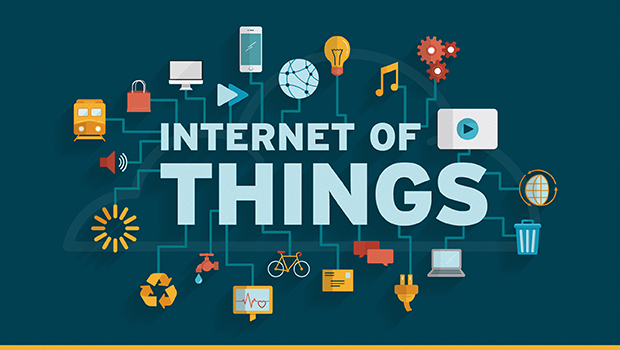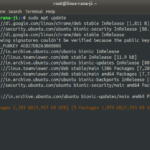What is the Internet of Things (IoT)

The Internet of Things, commonly referred to as IoT, is a system of interconnected devices, either through a wireless network or through the internet. This system is composed of devices that are able to collect data, process it, and then send it to the cloud for further analysis and storage. This technology has revolutionized many industries, from medicine to home automation, by allowing a wide array of devices to communicate with one another. By connecting devices to the internet, they are able to communicate with each other and with the cloud in order to share information and data. This is beneficial because it allows for more efficient and accurate communication and data analysis, which can be used to improve products and services.
What are features of IoT?
Internet of Things (IoT) is an innovative network of connected physical objects, ranging from everyday consumer items to industrial equipment, outfitted with the ability to collect and exchange data. It is a rapidly evolving technology that has the potential to revolutionize our daily lives, revolutionize businesses, and generate massive amounts of data. One of the primary features of IoT is the ability to connect physical objects to the internet, allowing them to be controlled remotely and monitored in real-time. Additionally, IoT offers the potential for systems to become more intelligent and predictive over time, as more data is gathered and analyzed. This is made possible by the use of sensors, which can detect changes in the environment and provide data.
IoT’s Benefit to Businesses

The Internet of Things (IoT) has revolutionized the way businesses operate today, enabling enhanced efficiency and productivity. By connecting devices to the internet, businesses are able to collect and analyze data in real-time, allowing them to identify and respond to trends quickly. Additionally, IoT-connected devices allow businesses to automate mundane tasks and make informed decisions based on data, rather than relying on manual input or intuition. Furthermore, IoT can improve customer service, since companies can use the data collected to better understand customer needs and respond to them more quickly and effectively. Finally, IoT-enabled businesses have the potential to reduce costs, as the data collected can help companies make more informed decisions when it comes to budgeting, spending, and resource allocation.
Connectivity and Interoperability
The advent of the Internet of Things (IoT) has led to the need for connectivity and interoperability of various connected devices. Connectivity is the ability of devices to communicate with each other, while interoperability is the capacity of these devices to exchange data and use it in a meaningful way. The IoT infrastructure is composed of a variety of interoperable devices, such as sensors, wearables, controllers, and actuators. Connectivity and interoperability of these devices is essential for the successful implementation of an IoT system. Connectivity is achieved through the use of various wireless or wired communication protocols, such as Wi-Fi, Bluetooth, Zigbee, and other proprietary protocols. Interoperability is achieved by having a common standard between the devices.
Security and Privacy Challenges
The Internet of Things (IoT) has become increasingly popular in recent years, as it allows for more efficient and convenient access to data and information. However, with the rise of the IoT, there have also been some security and privacy concerns that have arisen. These concerns are related to the potential for malicious actors to gain access to sensitive data and to abuse the data that is generated. It is important to understand the security and privacy challenges associated with the IoT in order to ensure that data is protected and that privacy is respected. One of the main security and privacy challenges associated with the IoT is that of data privacy. As many of the devices associated with the IoT are connected to the internet.
Data Protection Legislation
The concept of data protection legislation in the context of the Internet of Things (IoT) is a complex and multi-faceted one. On the one hand, the IoT is a vast and ever-growing network of interconnected devices, systems, and services that allow for the collection and transmission of vast amounts of data. On the other hand, data protection legislation is a set of laws or regulations that aim to protect the privacy of individuals and the security of their data. As the IoT continues to grow, it is becoming increasingly important to ensure that data protection legislation is in place to protect the data that is being collected and transmitted. This is particularly true as the data being collected and transmitted is often sensitive in nature, and can be used for.
Network Security
The Internet of Things (IoT) is a revolutionary technology that has the potential to significantly enhance the quality of life for individuals and businesses due to its ability to connect everyday objects to the internet. However, this technology also presents several security challenges. Network security of IoT is an important consideration when implementing an IoT system. It is necessary to ensure that the network is secure and protected from malicious actors. This can be done by using strong encryption algorithms, two-factor authentication, and firewalls to protect the IoT devices. Additionally, it is important to regularly update the software and firmware of all devices connected to the network. Finally, it is essential to continuously monitor the system and respond quickly to any suspicious activity.
Summing up
The Internet of Things (IoT) is a network of physical objects – such as vehicles, buildings, and home appliances – that are embedded with electronics, software, sensors, and other technologies for the purpose of connecting and exchanging data with other devices and systems. In essence, it is a vast network of connected devices that are able to communicate with each other, allowing them to collect and share data with each other. This network of interconnected devices has the potential to revolutionize many industries, from healthcare to agriculture, by providing greater control and access to data. At its core, the IoT is a network of physical objects that are connected and able to communicate with each other, enabling the collection and sharing of data.
The Internet of Things (IoT) offers a range of benefits to businesses, but the security and privacy risks that come with it cannot be overlooked.






